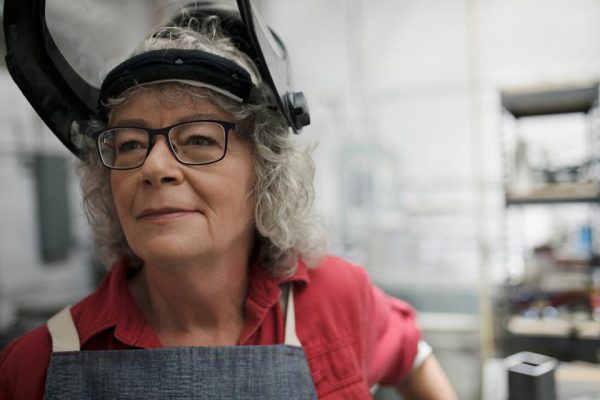Technology and the Work of the Future – Forbes

Getty
They tell us the robots are coming. Burger flipping robots. Construction robots. Truck driving robots. Even robots that drive your car. What are we poor humans to do? Will there be any jobs left? We might as well all retire right now.
Well we have met the robots, and they are us.
A new report by MIT’s Task Force on the Work of the Future, which I co-authored with Prof. David Autor and Dr. Elizabeth Reynolds, shows that technologies evolve within social and economic contexts, and we have great influence over whether they replace workers or augment their skills. And augmentation we need: it is difficult to predict the future, but we can see in the babies of today the workforce of tomorrow. We are entering an era of labor scarcity that will be with us for a long time.
The MIT Task Force consists of MIT experts in engineering, economics, AI, anthropology and cognitive science (among others) supported by a network of advisors from industry and government. The 2019 report frames a set of issues and policy directions. Ongoing research and future publications will provide greater depth and empirical data.
The history of technology shows that new machinery displaces human work: electrical relays displaced elevator operators, talking movies displaced orchestras in theaters, and computers displaced flight engineers in airline cockpits. When affecting entire communities, these displacements inflict social pain that can last for generations. Often the displaced jobs themselves supported technologies of earlier eras: elevator operators whisked people up skyscrapers, movie orchestras enhanced movies, and flight engineers managed newfangled flying machines. Applying of new technologies in turn creates new jobs: witness today’s roles for web designers, data scientists, even safety drivers for erstwhile driverless cars. In the past century, these newer jobs have tended to emphasize cognitive more than physical skills, favoring those with more education.
From World War II until about 1980, the MIT report shows, these displacements and renewals increased productivity and wage growth for most workers in the United States. But for the past forty years, despite the explosion of new information technologies, productivity growth has disproportionally benefitted those at the top. Average income has grown, but median income has grown less — meaning much of the productivity gains went to those at the top of the income scale. Employment remains high, so the challenge in the era of robotics and AI then, is not jobs, but good jobs — how do we ensure the vitality and prosperity of work for all?
Empirical evidence repeatedly shows that technologies alone do not determine the social and economic relationships that surround them. Numerically-controlled machine tools, for example (themselves early forms of industrial robots) could be deployed in ways that deskill machinists in favor of engineering managers. But companies also introduced the technology to offer new opportunities for traditional craftsmen, augmenting their knowledge of metalworking with computational precision. The differences lie in management practices, the organization of workflow, the role of workers in the process, and social policies governing the workplace.
The emerging worlds of robotics and AI offer a great deal of novelty, promise, and uncertainty. They will evolve in ways we can neither predict nor determine. Nonetheless we can, and inevitably will, shape their directions. What incentives favor replacing workers versus augmenting them with new technology? What problems do researchers and development engineers find interesting to solve? Who do young engineers imagine when they build new technology: users or employers?
We have numerous levers to shape not only the reception of new technology, but the technologies themselves. These include tax policies, investments in training and education, and public conversation. Consider federal R&D investments, which have wonderfully shaped the technologies of today. DARPA’s fingerprints are clearly visible on the internet and autonomous vehicles. What technology do we choose to support for tomorrow? Do our investments in robotics and AI envision clean futures devoid of people? Or do they create rich mixtures of people, robots, and infrastructure?
I’ll be writing more about these questions in the weeks and months to come. MIT’s Task Fore on the Work of the Future aims to reorient public conversation away from technological determinism and dystopian ideals of robotic domination and toward our abilities to shape technology and its fruits toward the broadest possible benefit.






